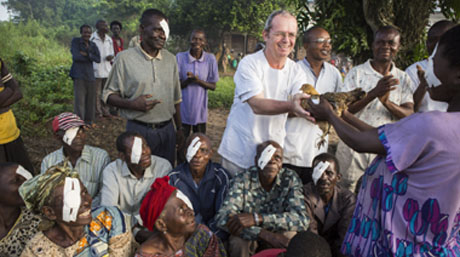We were on our way again... Me, Patient and Etienne, my two specialist ophthalmic nurses. The dry season gave us an excellent opportunity to get going again to help patients in remote areas. „Brother Richard, why are you going on missions to faraway places, when you have plenty of patients right here in Mbuji Mayi,” a European acquaintance asked me. We sat down, and I attempted to explain to him the isolation, loneliness and wretchedness of the people living in the interior regions. All one had to do – I said – was to look at the figures and the number of patients we treat on these occasions, and you will be shocked at the situation: patients frequently travel 4-500 kilometres on foot, a large number of them whose ailments have been totally neglected, some of them who have lived without sight for ten years; their only desire is to see again
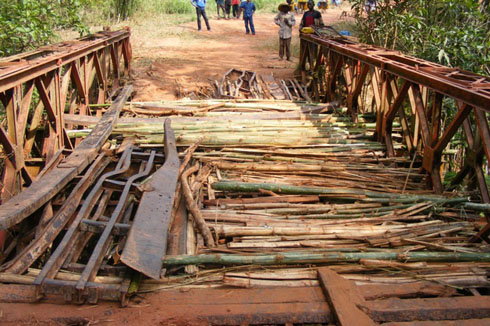
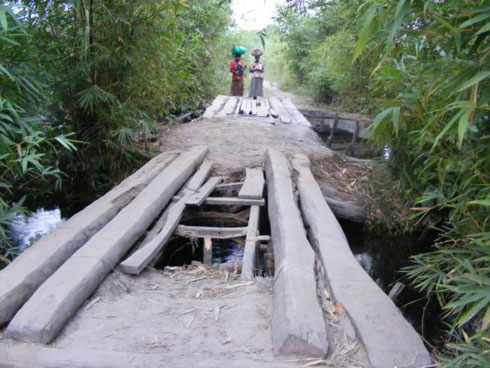
.
This year I decided to return to the land of the Pigmies, and to double the time we will spend there. That is how our plan was born to stay for three weeks in the village of Lokoko-Pelenge and another three weeks in the little township of Kole.
The trip was lovely and adventurous. Our chauffeur manoeuvred his way cleverly across the ramshackle bridges.
We proceeded for 550 km in our new off road vehicle along the Mbuji Mayi-Kabinda-Tshumbe route, thence by small plane to Tshumbe-Tshudi.
The landing gear of the plane had to be fixed
And from here for 3 km on foot to Lokoko, a small Pigmy settlement, where we were welcomed by the Agnus Dei German-Catholic community… and, of course, the patients! „There are already 650 patients on the list,” Brother Maurus advised us soon after our arrival. We had hardly put our luggage down, when young men stepped up to me: Doctor, do you recognise me? I am Richard, the nurse whom you operated on with bilateral cataracts in 2008, right here in Lokoko. Imagine, I am now the nurse in charge of the local Health Centre! Yes, I did remember him, he had been totally blind, and the operation was a success. It was marvellous to see what an effect our work had on the lives of some of our patients.
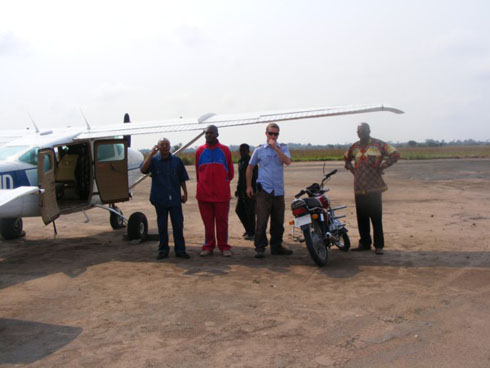
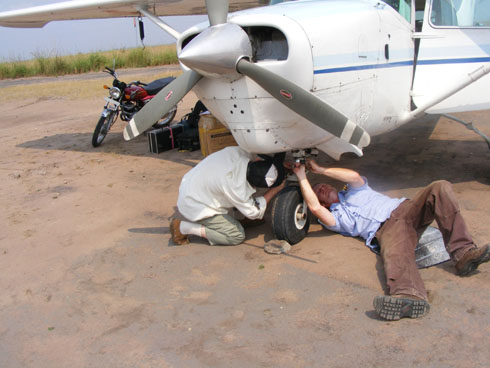
Richard, the nurse and Brother Maurus, the person responsible for technical matters
Incidentally, this year too we named the Lokoko action after Saint Elisabeth of Hungary! (Action St Elisabeth III.)
Patients arrived from everywhere. One of the first ones to present had an most striking and incredible story: After a trek of about 500 km from the equator, across the tropical forest, the elderly (about 65-year old), blind man arrived in Lokoko in March 2009, together with his two sons and a daughter. He had heard that the ophthalmologist came there annually, so to make sure, he arrived ahead of time for the 2009 mission… Only, it so happened that – for certain reasons, which I might come to some other time – we didn’t go that year to Lokoko. What to do? They settled in the village, confidently waiting for the doctor. Time went by, and after more than a year, we finally arrived…After a wait of a year: „Doctor, what is the verdict?”
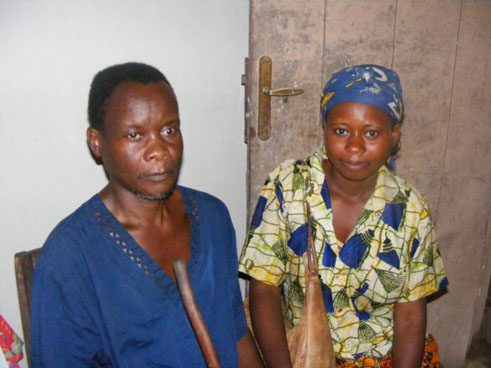
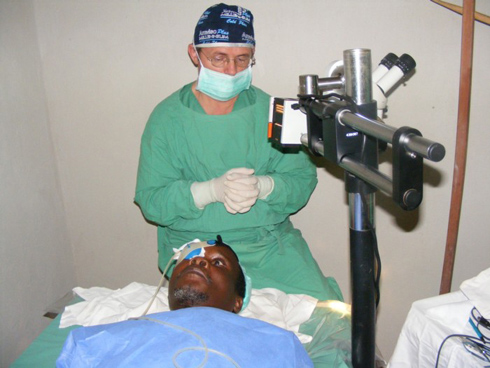
His daughter, who was guiding him, stood there trembling. What if the doctor will say something bad, and he could not be helped?
Luckily the father was suffering from long-standing cataracts. They weren’t even grey, but almost black! They looked forward to the operation with great hopes, and when the dressing was removed the following day, Papa saw his sons and his daughter again! What wonderful, memorable moments!
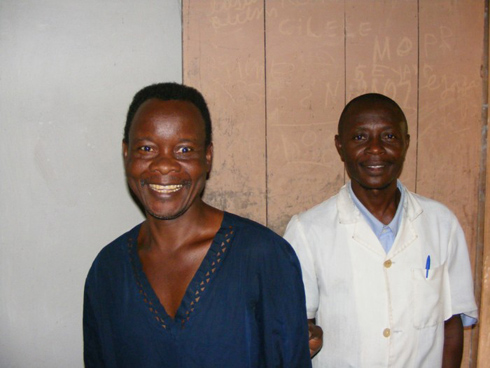
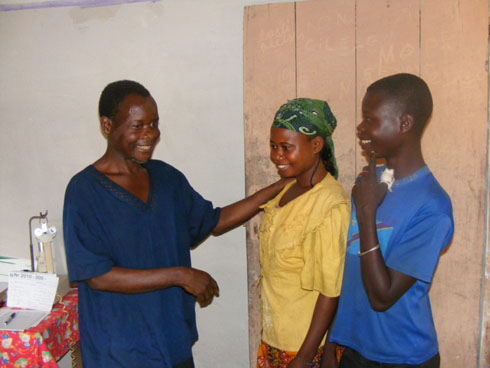
„Is that you, Joe? How you have grown! I can see again, so that’s what the family looks?”
Unfortunately there were several patients with last stage glaucoma. They too came in the hope of a cure, and hearing the medical opinion was very distressing. The community organized special praying sessions for these patients to at least heal their souls. This was a great help.
In the course of the three weeks, we saw 1,050 patients, approximately 150 per day. We could give away about 600 Chinese-made glasses; they are very useful! I could barely see by the end of the day. On operating days we performed twenty operations; that way we managed to operate on a total of 145 patients. By the end we were pretty worn-out.
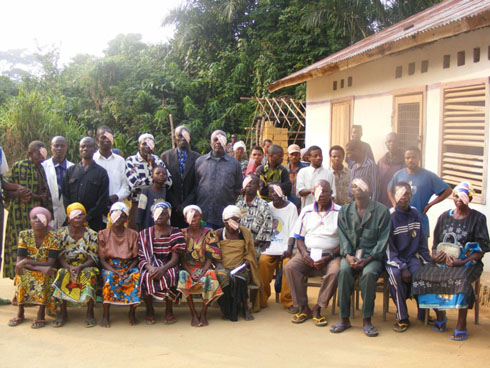
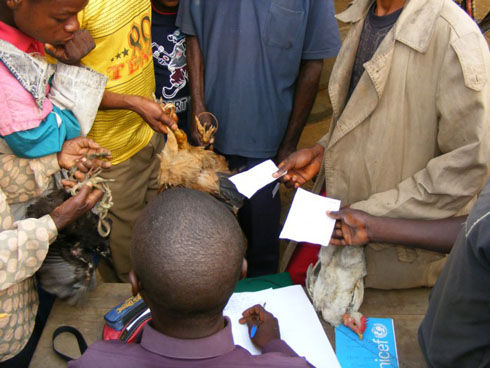
The price of an operation: a hen! Papa Wemba, the Pigmy hunter. The 1$ Chinese glasses are a great treasure!
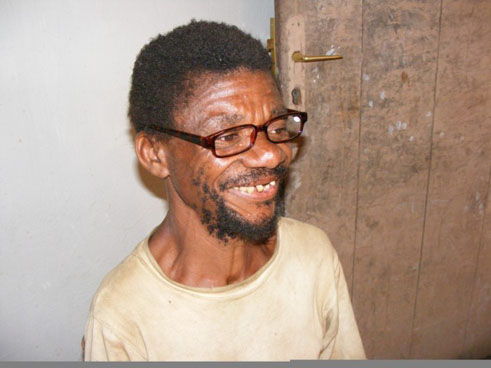
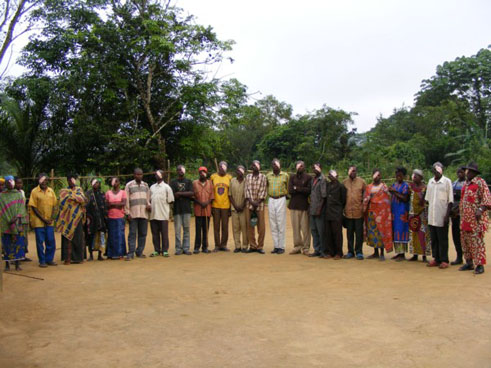
Deep down I had hoped that there would be fewer patients in the little township of Kole. On the contrary, we were deluged by patients. During the same period of three weeks, we examined 1,100 patients, and operated on 144 of them! Forty-five of these presented with bilateral total cataracts.
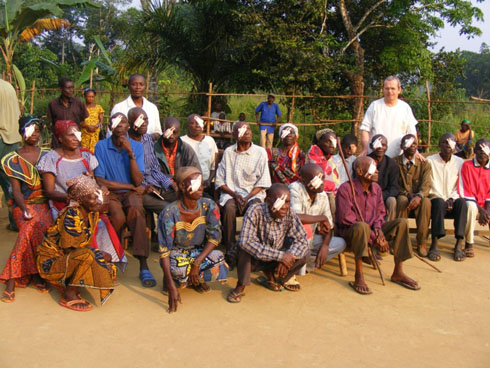
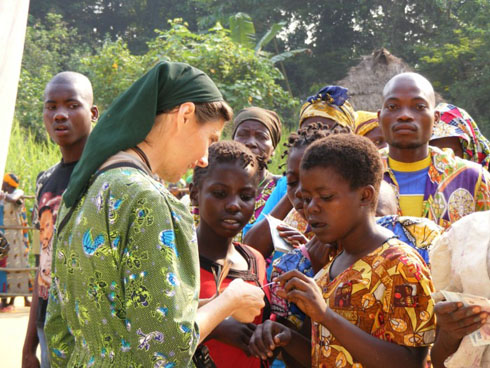
A 12 year-old child.....................................and the older generation.
Here there were some miraculous cures and outbreaks of joy, even though we could operate only on one side because of lack of time. We were very tired. Meanwhile I had a minor malaria attack, but luckily I got over it in time.
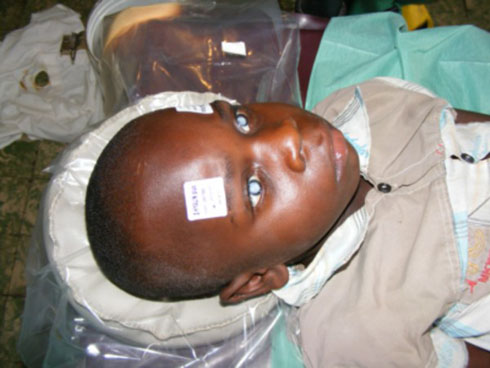
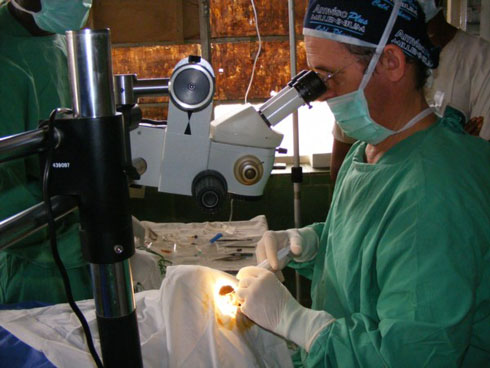
Thanks to the care of our hosts at Kole, the Missionary Sisters of Jesus Christ, we were able to overcome all these trials! Awaiting the plane... Etienne, Sister Bernadette, Brother Richard and Patient
We have since returned to Mbuji Mayi. We know that thousands of patients await us as the messiah; we know that others are preparing to trek for hundreds of miles to find a little relief. Maurus said, "300 km from here, there is a very large settlement of Pygmies, with approx. 1,500 members. That is, where you should go one day!” In our hearts, our prayers, we are already preparing our strengths, our resources, our time for future missions... I am always aware that what our little ophthalmic unit is able to do is miraculous, unique, but at the same time it is also a great responsibility. Ninety percent of the ophthalmologists in the Congo are sitting tight in the cities, while the majority of patients are left to their own devices. It is our real mission, to go to them. A drop in an ocean of suffering!
To apply the most modern techniques in the rain forest, that is my aspiration, that is how we can achieve the best results. (Small Incision Cataract Surgery with pliable lens implant.)
Lokoko, August 5, 2010



